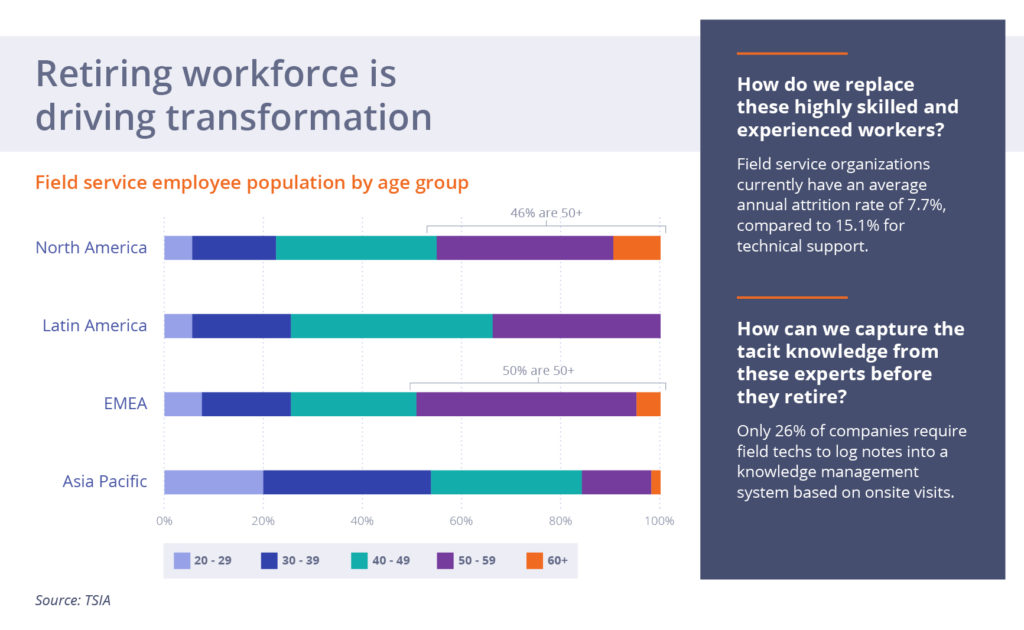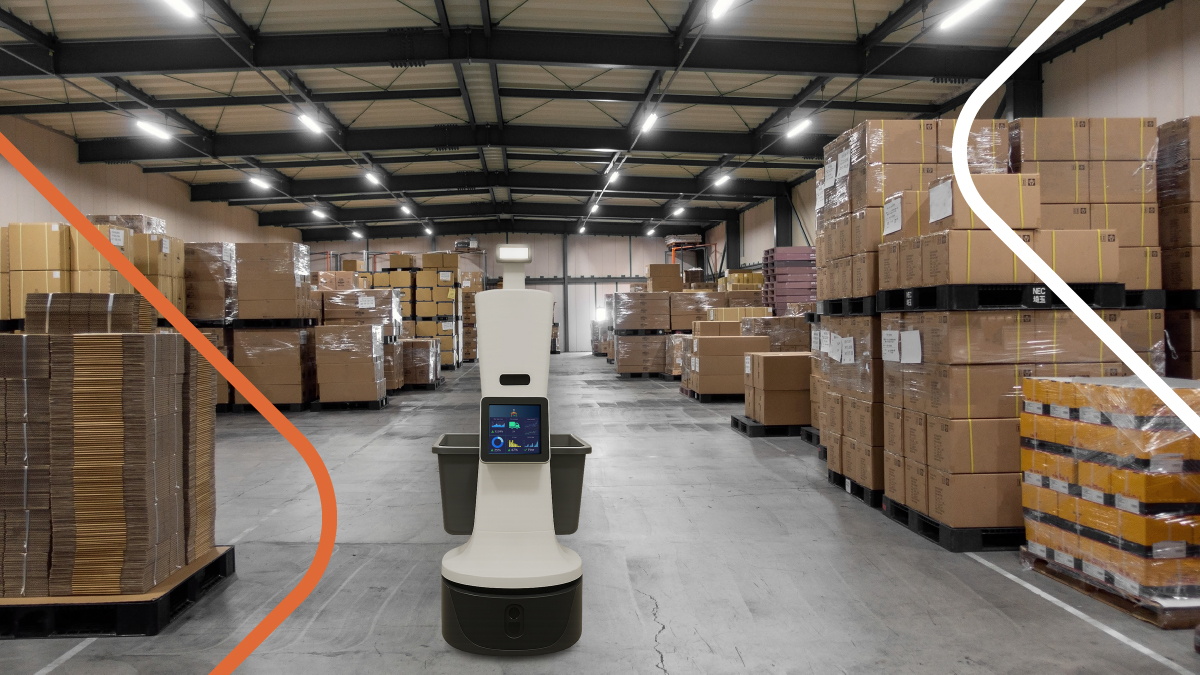
Contents
2020 forced field service organizations to make a painful choice.
As 2020 upended every aspect of daily life, organizations had to choose whether to 1) lay off employees in response to decreased demand or 2) hold on to those employees in an effort to “ride out” the pandemic – thereby absorbing the resulting impact to their bottom line.
Now, as the world continues to make steps toward a full reopening, service leaders are faced with a dilemma. They are ready to pump up capacity and take advantage of an impending wave of work opportunity, but are also faced with the same labor shortages currently rippling through every industry.
This problem has wide-ranging implications.
Heightened competition on the supply side of IT services will continue to make sourcing labor difficult. What’s more, the competing factors at the root of this labor problem are poised to induce lasting change in the composition of service delivery workforces.
By gaining a better understanding of this challenge, service leaders can get ahead of the game and begin building a blended workforce that positions them advantageously in the new normal.
This article will cover:
- The roots of current labor issues in the service delivery space
- The lasting supply-side challenges that service providers can expect
- How to address those challenges with a blended workforce
The domino effect
What we’re currently witnessing is a domino effect:
The mass layoffs and furloughs of 2020 hollowed out the workforce, which accelerated trends at the heart of the current labor shortage. This led to increased competition for available labor, which has driven up the price of labor.
This increased level of competition will result in more painful issues on the supply side of the service delivery equation.
Taken together, it all amounts to increased competition, increased labor costs, and increased capacity issues. Labor, like much of the supply chain, will be on backorder.
Labor, like much of the supply chain, will be on backorder
It’s a bitter pill to swallow, and it’s especially painful given the broad set of opportunities currently facing field service. Retail and other industries are on the precipice of a technology-driven transformation, which means that demand for skilled technical labor is spiking just as the labor supply chain is becoming more problematic. Google search analytics show that, at the halfway point of 2021, search volume for “field service technician” had already passed the total number of 2019 searches.
Some field service leaders may be thinking, “I’ll just wait it out. If I weather this storm, the labor market will even out, my labor channels will return to normal, and I can get back to business as usual.”
Others may be thinking, “Do I want to rebuild my full-time workforce the same way I always have, or is there now a better way to build a mousetrap?”
The latter perspective is the better of the two. Why? Because it takes into account the significant shift in labor trends we’re currently witnessing.
Older generations of workers are opting not to return to the workforce, and their in-demand skills are not being replaced by younger generations at an equitable rate. This is especially true for trades in field services: a 2020 Service Council report found that 70% of service organizations expected a burdensome level of retirement-driven skill loss over the next decade.
Source: TSIA
More generally, burnout is causing many to quit, change careers, or hesitate before reentering the workforce. The dynamic between employers and employees is changing as worker expectations adjust to our new reality. To put it bluntly, there is no “returning to normal.”
There is, however, a path forward.
Building for the future
To remain competitive, companies need to rethink the structure of their workforce and transform how they source labor. This means they cannot react to the current labor shortage by leaning entirely on full-time staff or subcontractors.
Instead, service providers must build out their labor options and develop a blended workforce that can adapt to both unpredictable demand and lasting changes in the labor supply chain.
Service providers must build out their labor options and develop a blended workforce
By supplementing full-time employees and subcontractors with on-demand labor, service leaders can maximize their share of the current industry-wide service opportunity. Instead of spending their energy struggling to find available labor, they can focus on winning work first and then choosing the labor option that best suits the work’s needs. In other words, this is an opportunity for service providers to allow the work to determine the workforce, instead of the other way around.
This is an opportunity for service providers to allow the work to determine the workforce
For example, full-time employees can focus their efforts on high-value work near a service hub, while subcontracted workers can focus on nearby jobs that don’t require a high degree of visibility or management from the primary service provider.
The key to the blended workforce is on-demand labor, which allows service providers to take on work that would otherwise fall outside of their geographical or technical niche.
Talent platforms like Field Nation allow service providers to vet on-demand technicians thoroughly and efficiently – applying the same discipline that companies traditionally use to hire W2’s, but in an automated manner. This means service leaders can experience increased confidence in their end-client’s satisfaction while also saving on travel costs. This combination of flexibility, visibility, and cost-effectiveness is what makes the blended workforce a powerful solution to labor supply issues.
The current labor shortage is not an insurmountable problem, nor is it something that will just go away. Rather, it is a unique opportunity that demands a strategic response from service providers.
By embracing the blended workforce model, service leaders can lead the charge in this present moment of opportunity. Even better, they’ll set their businesses up for future success.








